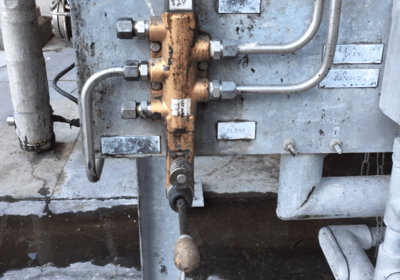Directional control valve reliability is critical in any heavy industrial application. Selecting the right valve may be the most critical decision you’ll make regarding whether or not you will experience failure, downtime, or breakdowns. Proper valve selection can help avoid possible business interruptions, environmental catastrophes, or even loss of life.
Every heavy industry application and its operating environment are unique. To select the most reliable directional control valve, you must consider all the variables of your specific application. Based on more than 70 years of experience creating the industry’s most reliable valves, our engineers at Versa Valves have compiled the following considerations as part of our recommended valve selection process:
 1. Application Environment – Consider all applicable environmental concerns, which among others include the presence of dust, dirt, and insects; weather and temperature; and the mobility and accessibility of the location the valve will be used in.
1. Application Environment – Consider all applicable environmental concerns, which among others include the presence of dust, dirt, and insects; weather and temperature; and the mobility and accessibility of the location the valve will be used in.
2. Media – Determine what media the valve will control, which could include compressed air, hydraulic oil, water, natural gas, or inert gases.
3. Operating and Available Pressure – What are the minimum and maximum pressure requirements? Will the valve be pilot-operated, manual, or solenoid-pilot? If the latter, will it be internally piloted (InPilot) or externally piloted (ExPilot)?
4. Flow/Port Size and Location – It is important to base the valve size on the flow factor (Cv) instead of the application. Different types of valves can have widely varying flow factors at the same port size. Port size is not the most accurate way to properly size a valve and often leads to oversized valves, additional material, unnecessary expense, and higher installation costs. Fully ported internal flow areas ensure maximum flow for the corresponding port (pipe) connection.
5. Function – Do you require a 2- or 3-position valve? For example, a 2-position valve is most commonly used to pressurize or depressurize a fluid power circuit. A 3-position valve performs the same function as a 2-position valve but adds a third function to an unactuated valve. The third function occurs when the directional control valve is in the center position. The most common center positions are all ports blocked (APB) for fail-last applications, cylinder ports open to exhaust, inlet open to both cylinder ports, and all ports open (APO).
6. Type of Operators – Know the required voltage, current, area classification, and ingress protection. Specify the type of required electrical connection. Flying leads, DIN (Hirschman style) connectors and junction boxes are most common. Class F coil insulation is standard, while Class H is available for high-temperature applications. Power consumption is also significant. Low-power solenoid coils are available in 1.8W, 0.85W, and 0.5W.
7. Regulation or Speed Control – Consider if pressure regulators, speed controls, flow control valves, and/or check valves are necessary for your application.
8. Enhanced Functionality for Safety and Redundancy– Versa offers many options for enhancing reliability and safety. For added safety, consider the Latching/Manual reset and the Shut Off Valve (SOV). Latching manual reset valves are particularly suited for applications where it is desirable or mandatory to manually reset or restart a system. Shut Off Valves provide a series pilot control circuit in single valve for processes with various control signals. The loss of either signal will cause the valve to shift to the unactuated position. To add redundancy, consider the Redundant Valve (RS). Redundant Valves provide parallel control circuits in a single valve to avoid process interruptions for maintenance or failure of a single control circuit. Both coils must be de-energized to shift to the unactuated position.
While it’s likely that not all of these considerations will be relevant to your particular application, working through the entire process makes sure no applicable ones are missed. Additionally, by following this process, you can ensure you are considering all the significant environmental factors necessary to select a durable, proven, reliable valve for your exact application.
Learn more about valve selection for heavy industrial applications by reading our full white paper, How to Ensure Directional Control Valve Reliability in Extreme Environments.


